
The Paper has learned that the "Academic Symposium on Chinese Paintings from the Song and Yuan Dynasties in Japan" was recently held at Zhejiang University. Focusing on topics such as "Research on Song and Yuan Dynasty Paintings in Japan," "Research on Song and Yuan Dynasty Paintings in Japanese Academia," and "Research on Song and Yuan Dynasty Zen Painting," the symposium aimed to advance the study of the history of Song and Yuan painting by deeply exploring the academic value of Chinese paintings from the Song and Yuan dynasties in Japan.
Japan has a long history of collecting Chinese calligraphy and painting, dating back to the Nara and Heian periods (8th-12th centuries). During this period, works brought back from China were brought back to Japan through envoys to Tang Dynasty, Buddhist monks visiting Tang and Song dynasties, and through private trade. These works are now known as "Kukodu-bin." During the Kamakura period (13th-14th centuries), the military government was established and Zen Buddhism flourished. In the Muromachi period (15th-16th centuries), the Ashikaga shogunate actively collected famous paintings from the Song and Yuan dynasties. Their villa (Ginkaku-ji Temple) was located in Kyoto's Higashiyama district, earning it the name "Higashiyama Imperial Monument." These works are now known as "Kudu-bin." After the Edo period (17th-19th centuries), numerous Ming and Qing dynasty literati paintings were imported into Japan through Nagasaki, the only officially recognized port. These works are known as "Chudu-bin." Around the time of the Xinhai Revolution (1911), private collections from Beijing, Shanghai, and Guangdong began to flow out of Japan. Through intermediaries like Luo Zhenyu, these Chinese artifacts were acquired by emerging Japanese tycoons. These Chinese artifacts are known as "Shindu-bin." The imported items from these four stages have been the main body of Chinese calligraphy and painting appreciation in Japan in different eras. From the Japanese emperor, aristocracy and samurai class, they gradually expanded to the intellectuals, entrepreneurs, calligraphy and painting enthusiasts in the folk. The collection range includes Buddhist scriptures, Chinese books, religious paintings, Zen paintings, Southern Song Dynasty court paintings, Zhejiang School, Ming and Qing Dynasty literati paintings, and even modern and contemporary Chinese paintings, with rich varieties.

Liang Kai, Southern Song Dynasty, three paintings, "Buddha Emerging from the Mountain, Snow Scene" (right painting, Southern Song-Yuan Dynasty, 13th-14th century)
This seminar consists of 6 sessions, including five academic reports and discussions with the themes of "Research on Song and Yuan Dynasty Paintings in Japanese Collection", "Research on Song and Yuan Dynasty Paintings in Japanese Academic Circles (Volumes 1 and 2)", and "Research on Song and Yuan Dynasty Zen Paintings (Volumes 1 and 2)", as well as a symposium and discussion on Song and Yuan Dynasty paintings and Zen culture held at Jingshan Temple.
Fan Jun, member of the Party Leadership Group and Vice Chairman of the Zhejiang Provincial Federation of Social Sciences, Chen Kaixuan, Party Secretary and Vice Dean of the School of Art and Archaeology at Zhejiang University, and Zhao Yi, Vice Dean of the Institute of Social Sciences at Zhejiang University, attended the opening ceremony and delivered speeches. Chen Ye, Professor of Zhejiang University, Director of the Research Center for the Preservation and Utilization of the "Chinese Painting Series of Successive Dynasties," and Executive Deputy Director and Chief Expert of the Center for Research on Ancient Chinese Painting and Calligraphy at Zhejiang University (a key research base for high-quality philosophy and social sciences in Zhejiang Province), delivered a keynote speech.

Seminar site
Chen Kaixuan stated that the vitality of art comes from the exchange and mutual learning between different cultures. The School of Art and Archaeology of Zhejiang University has always upheld the cultural mission of researching, protecting, and disseminating Chinese art. The Center for Research on Ancient Chinese Painting and Calligraphy of Zhejiang University has long been committed to compiling the "Great Series of Chinese Paintings of Successive Dynasties" and subsequently deepening its research, exchange, and promotion efforts. Its "Complete Collection of Song Dynasty Paintings" and "Complete Collection of Yuan Dynasty Paintings" include many masterpieces that have played a pivotal role in the history of Sino-Japanese artistic exchange. Taking this symposium as an opportunity, we hope that the School of Art and Archaeology of Zhejiang University will establish a deeper cooperation mechanism with the experts, scholars, and cultural and museum institutions of universities participating in the symposium, further promoting joint talent development, discipline development, and research projects among scholars from both countries, jointly exploring the spiritual connotations and contemporary values of Eastern art, and revitalizing Sino-Japanese artistic exchanges in the new era.
Zhao Yi said that China and Japan have a long history of exchanges in the field of art. Ancient paintings, as an important part of this history, carry a common cultural memory. He hopes that through this academic exchange and seminar, this tradition can be inherited and carried forward, and that we can work together to promote fruitful academic research.
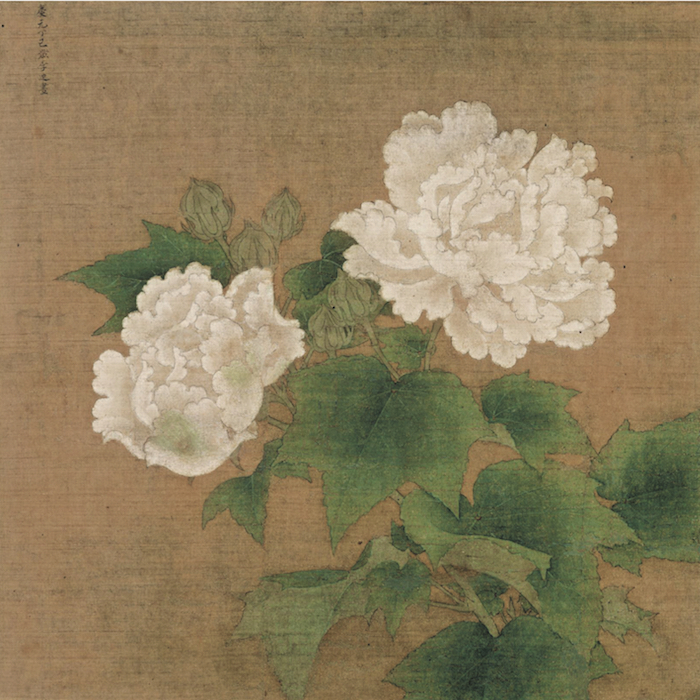
White Hibiscus in Red and White Hibiscus by Li Di of the Southern Song Dynasty
Fan Jun expressed his belief that through the joint participation, mutual learning and reference of experts and scholars from China and Japan in this seminar, they can have a deeper understanding and recognition of the aesthetic value and cultural spirit of Song and Yuan Dynasty paintings, and jointly contribute wisdom and strength to the research and dissemination of Chinese painting art and the smooth and in-depth development of Sino-Japanese cultural education.
Chen Ye introduced the "Chinese Painting Series of Successive Dynasties," the Zhejiang University Center for Ancient Chinese Painting and Calligraphy Research (a key research base for high-quality philosophy and social sciences in Zhejiang Province), and the "Chinese Painting Series of Successive Dynasties Conservation and Utilization Research Center," all of which are highly relevant to this symposium. She explained that the symposium chose Chinese paintings from the Song and Yuan dynasties in Japan as its theme because they profoundly influenced Japanese art and aesthetics, and that Japanese collections and research have broadened the dimensions and perspectives of understanding the history of Song and Yuan painting, accumulating research findings.
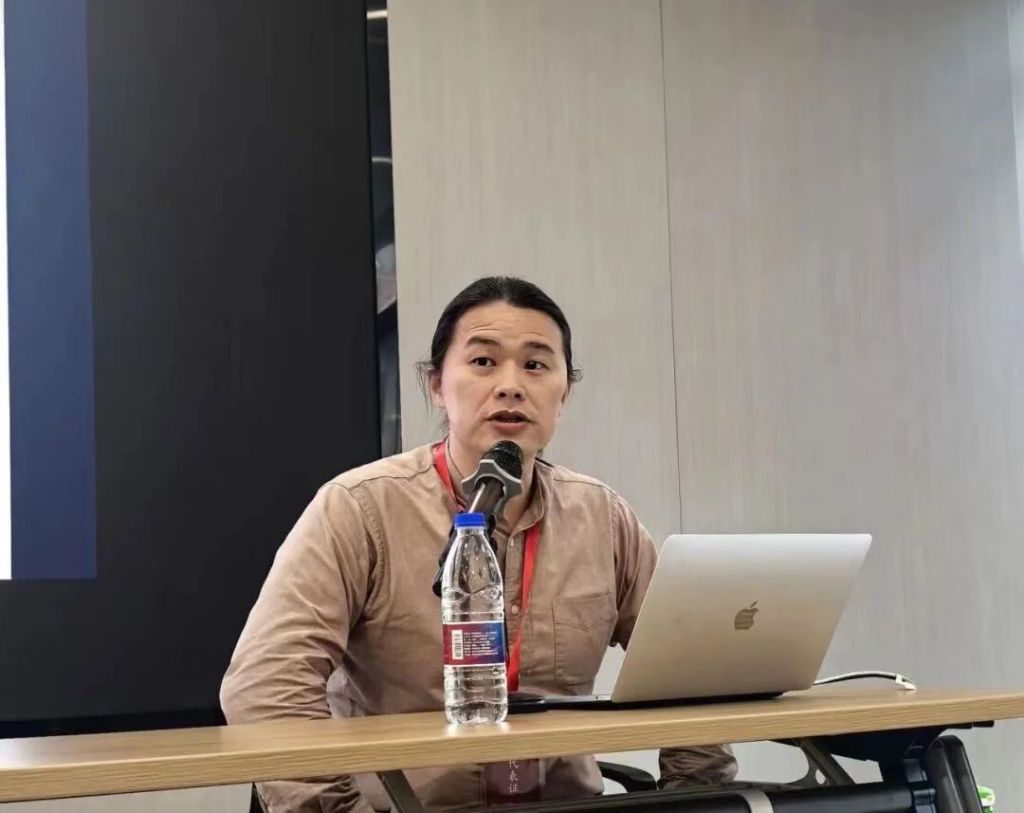
Huang Xiaofeng, professor and dean of the School of Humanities at the Central Academy of Fine Arts

Yu Hui, research curator at the Palace Museum
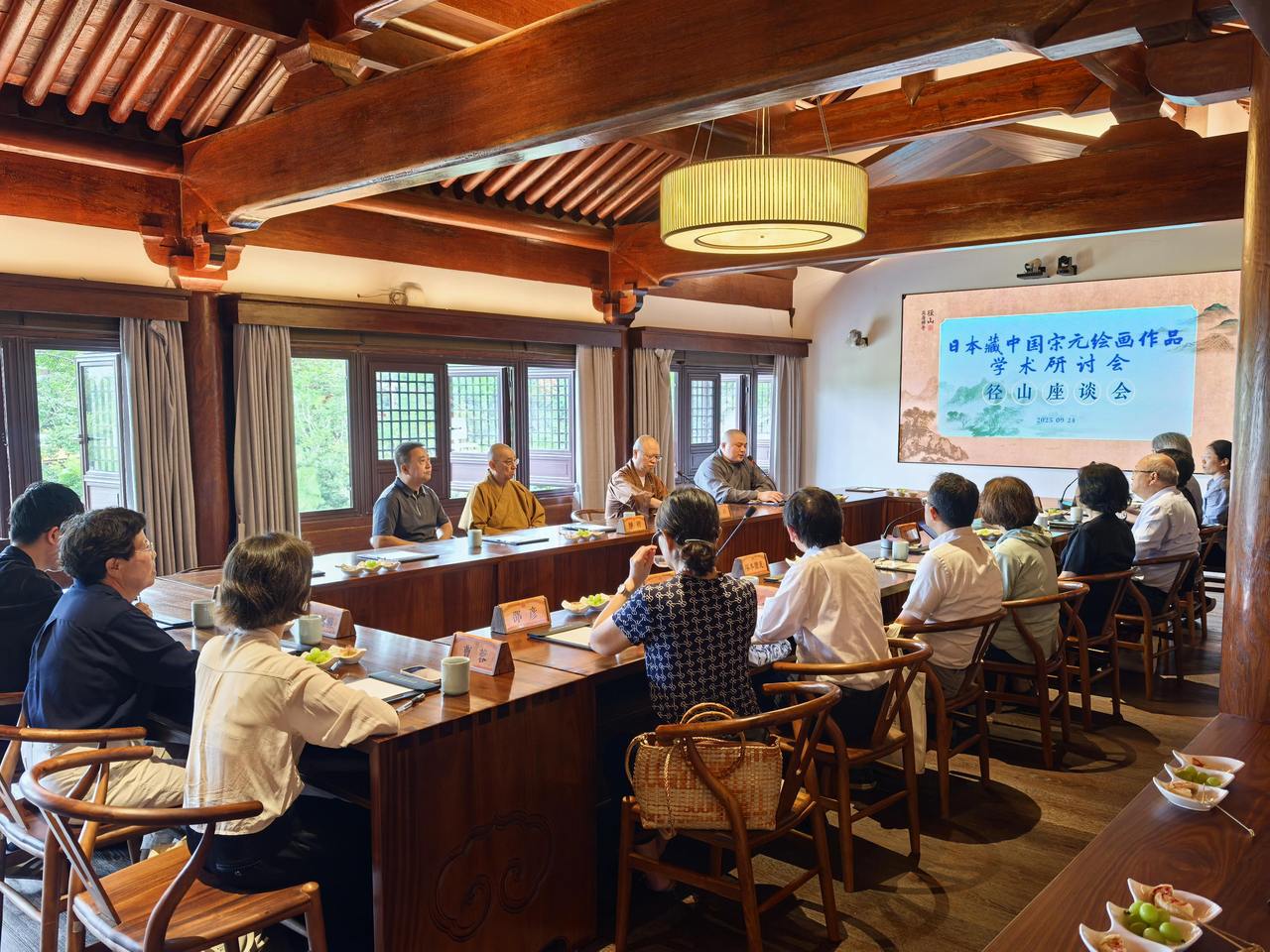
Jingshan Temple symposium
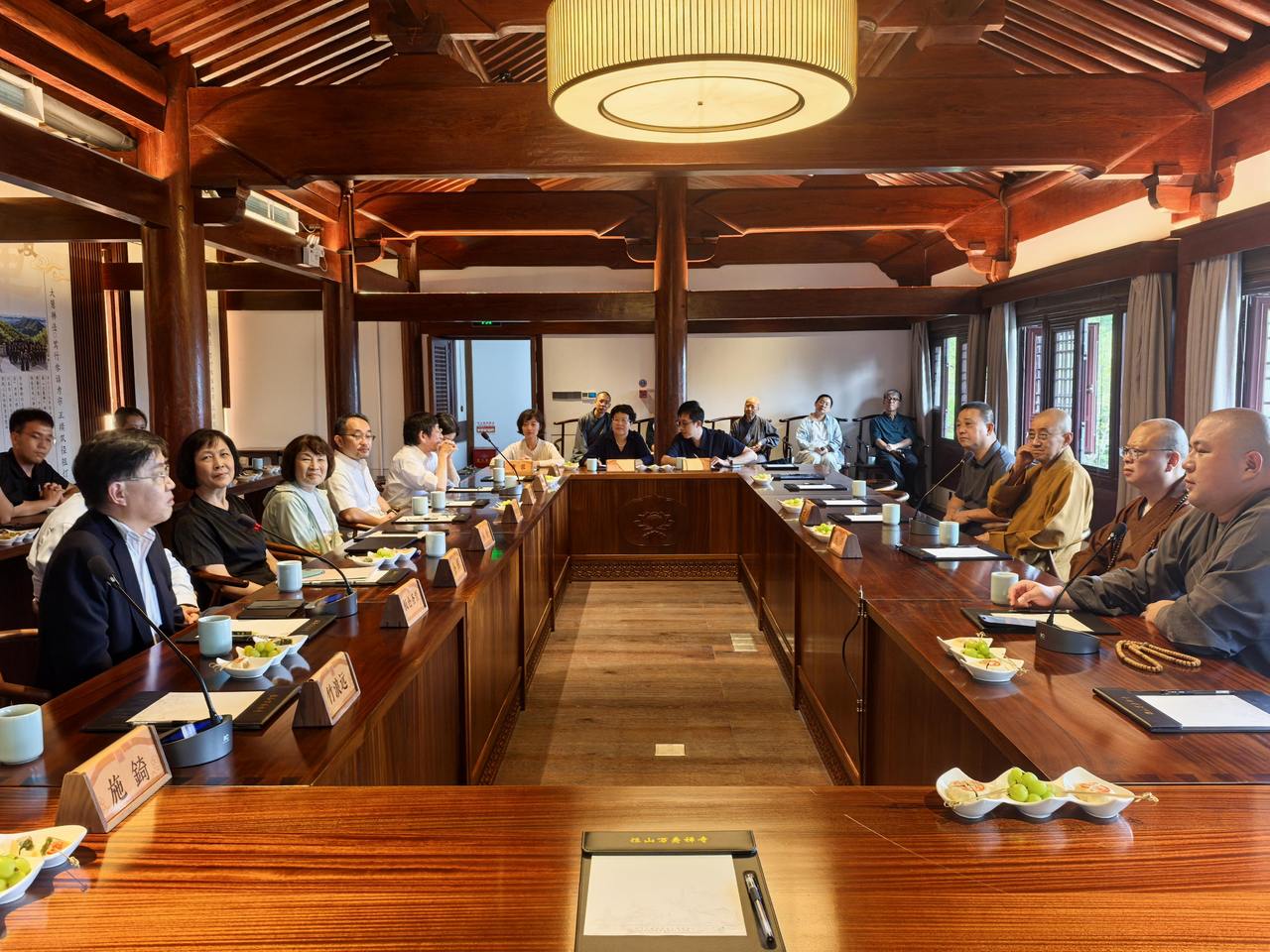
Jingshan Temple symposium
On the afternoon of September 24th, attendees visited the Song Dynasty imperial stele and temple architecture at Jingshan Temple and attended the opening ceremony of the exhibition "Sumifu in a Square Inch: The Sinicization of Buddhism Through Posts." Jingshan Temple is a key landmark for Buddhist culture, art, and cultural exchange, interwoven with the ideological threads of the Sinicization of Buddhism, the artistic expression of Zen culture, and the historical threads of Sino-Japanese cultural exchange.
On the evening of September 23rd, Professor Itakura Seito of the Institute of Oriental Culture at the University of Tokyo was invited to deliver the 36th lecture of the "Zhejiang University Oriental Forum: Light of Civilization," titled "The Creation, Appreciation, and Dissemination of Higashiyama Imperial Objects." On the evening of September 24th, Professor Takenami Tomo of Kyoto City University of Arts was invited to deliver the 77th lecture of the "Fangwen Art and Archaeology Academic Lectures," titled "Images of the Ocean in Chinese Painting: A Focus on Tang Dynasty Sea Charts." The lectures were sponsored by the Zhejiang University Academy of Social Sciences, the Zhejiang University Museum of Art and Archaeology, and the Zhejiang University Center for the Study of Ancient Chinese Painting and Calligraphy (a key research base for high-quality philosophy and social sciences in Zhejiang Province).

Professor Itakura Seito of the Institute of Oriental Culture, University of Tokyo, gave a lecture on "The Creation, Appreciation and Dissemination of Tozan Imperial Objects"
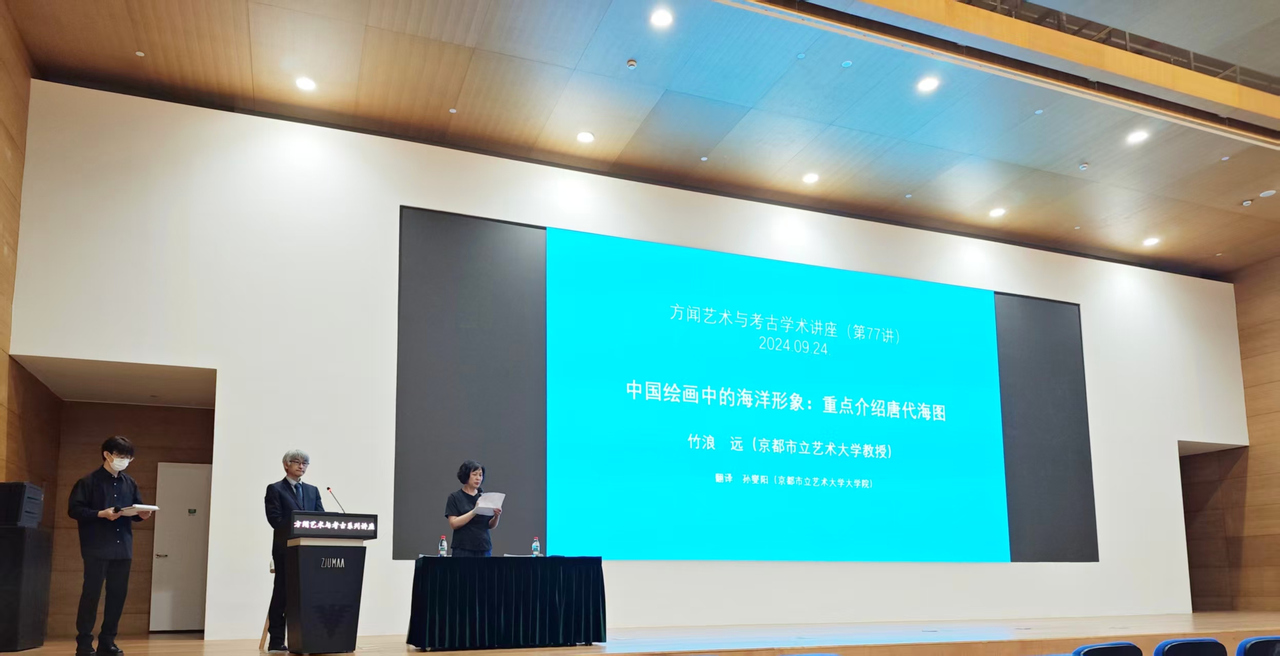
Professor Takenami Toshio of Kyoto City University of Arts gave a lecture titled "Images of the Ocean in Chinese Painting: Focusing on Tang Dynasty Sea Charts"
The seminar was hosted by the "Chinese Painting Series of All Ages" Protection and Utilization Research Center, co-organized by Zhejiang University Institute of Social Sciences, Zhejiang University School of Art and Archaeology, and Yuhang Media Group, and undertaken by Zhejiang University Center for Research on Ancient Chinese Painting and Calligraphy (Zhejiang Province's Key Research Base for High-Quality Philosophy and Social Sciences).
(This article is based on relevant information provided by the organizer)